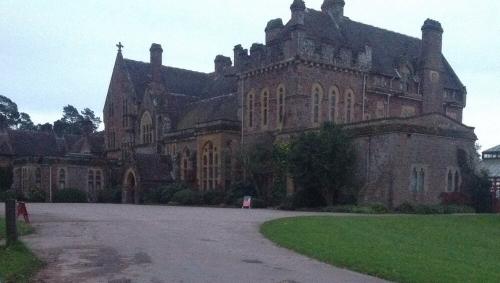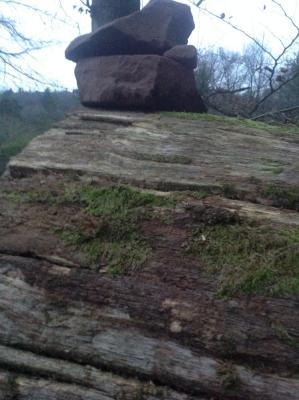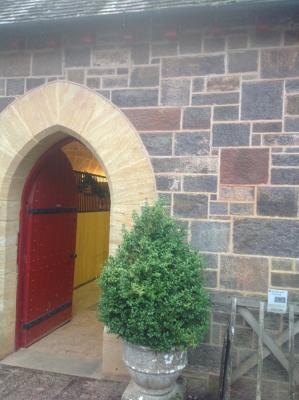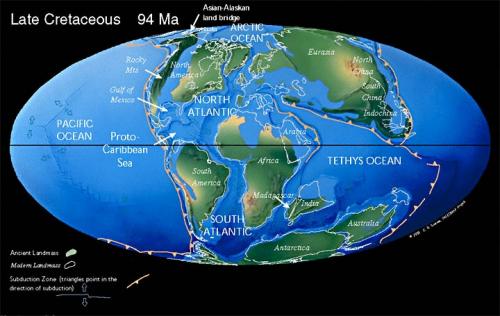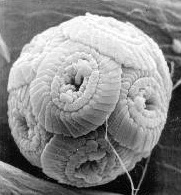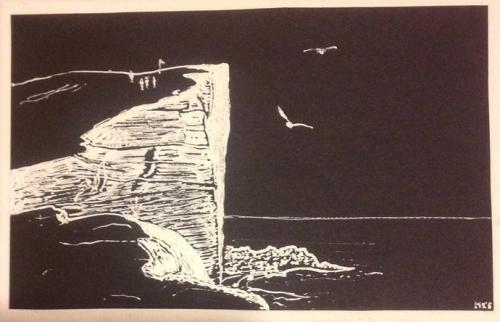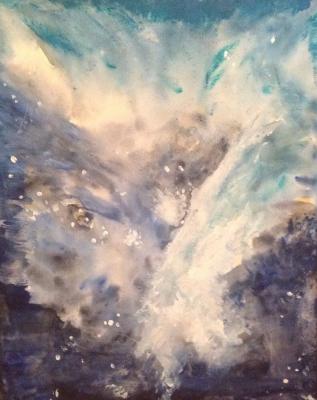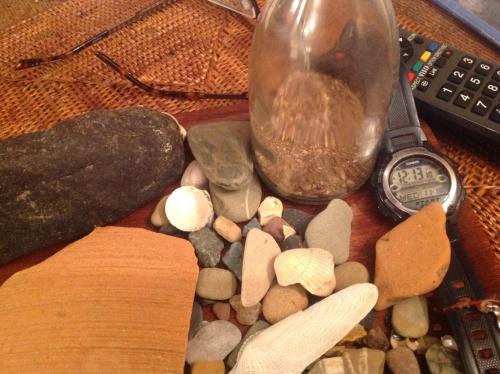-
Posts
3218 -
Joined
-
Last visited
Content Type
Profiles
Forums
Events
Everything posted by Mike Smith Cosmos
-
------------------------------------ Quote "Mike, I continue to be bemused by your oscillation between very, very basic concepts and wild speculation about more advanced topics. You cannot sensibly engage in the latter till you have mastered the former." Unquote. Ophiolite ------------------------------------ I think it is a consequence of ' not knowing accurately ' that causes the speculation. Looking at Art . Pictures , visualisation recently , I have found out :- When we look at a painting .' Say abstract '. Because we are not told what it is . Very quickly our brain chases ideas , images in our memory , and very quickly you see ( a face , a sky , a river whatever , seldom a nothing ) We are hard wired to look for solutions, understanding , solve problems ) if we do not know what something is ' we speculate ' in order to make sense of our environment . When we know or have a taught explanation , we do not go out of our way to speculate . But having no preconceived ideas we ( certainly me ) go wild trying to give reason to the world I find myself in . An artist can use this to his or her advantage in a painting. By just suggesting an image , the artist can rely on the viewers brain , making a far better job at pictorially representing the 'thing ' than the painter can . For example the painter only need put a vertical stroke and a few billows of green and an observer fills in or imagines all the detailed leaves and branches and registers a tree ( provided of course it is not the main focus of the picture. If it were , then he or she can make scant strokes for , clouds , or hedges say ) I find this very interesting in its own right ! Mike
-
Now I understand , the cementation, of the Devonian Sand into Devonian sandstone .Interesting that you can see the supercontinent ( not Pangea ) feeding the U.k with the vast river drainage . By looking at the Red dot ( this is where .U.K. Is at the time ( below the equator at that Devonian time ) Mike
-
I am just not quite sure what makes sedimentary red sand stick together? Or any other particles in the geological column. Is it pressure, time , heat , dehydration , or just the particles being held next to one another for so long a time period ( like 10's or 100's of millions of years) that the particles develop some form of atomic bonding , from a sheer , proximity perspective? The end result is they ( the particles en mass ) become a rock in the process ! How ? By what mechanism are they held together ? Mike
-

What is going on with my Soup in the Pan?
Mike Smith Cosmos replied to Mike Smith Cosmos's topic in The Lounge
Ok. I am just not quite sure what makes sedimentary red sand stick together? Is it pressure, time , heat , dehydration , or just the sand particles being held next to one another for so long a time period ( like 10's of millions of years) that the particles develop some form of atomic bonding , from a sheer , proximity perspective? Mike -

What is going on with my Soup in the Pan?
Mike Smith Cosmos replied to Mike Smith Cosmos's topic in The Lounge
Yes but this is not helping my ' Sediment ' I looked at the geological map of the British Isles , and it showed a Devonian sandstone deposit , just North of here . Going from Tiverton in Devon ( 5 miles from where I live ) stretching toward Barnstable N. Devon . I drove up this afternoon and found a stately home built there , of Devon Sandstone. " Knight-shays built by the Heathcote Amery Famous Lace makers ( now owned by the national trust . ) The paths and ground was that Red Brown . I walked the dog in the grounds and sure enough there were chunks of Devonian Red Sandstone , just laying around . See pics . Now which of these processes took sand washing down from a river coming from North America then part of a super continent draining across England depositing sand in a great alluvial plane across , S. Wales , Devon and Cornwall , among other places. Deposited the Devononian Sand and took part in its sedimentation process. Current 4 pm Monday 23rd November :- Which process took wet sand into sedimentary Devonian Sandstone . ( second picture ) then used in building red stones in third picture ? Mike -

What is going on with my Soup in the Pan?
Mike Smith Cosmos replied to Mike Smith Cosmos's topic in The Lounge
. Oops . I am no good at history either . It began with A though ! Mike -

What is going on with my Soup in the Pan?
Mike Smith Cosmos replied to Mike Smith Cosmos's topic in The Lounge
.. Well then the interest and intrigue of reading Ophiolites replies to my geological / astronomical enquiry , is to blame, I guess ! In England , we have some folk law about King Arthur ( oops Alfred ) and burning the cakes ! On a geological map there appears to be a great outcrop of Devonian sandstone , just north of here , between Tiverton and Barnstable . I am going out to see if I can see something ? That's if I do not get caught up by " saccharification " Mike Ps I am on my way to the outcrop , I will catch you guys later ! -

What is going on with my Soup in the Pan?
Mike Smith Cosmos replied to Mike Smith Cosmos's topic in The Lounge
Why should that cause such ON - OFF conditions . What does the initial heat do , or pressure do , one minute ? And What does the water do the next minute , That switches this powerful attraction ON and OFF ? It must switch on some form of attraction ( bonding ) one minute , and some form of switching off bonding the next? I am not a chemist , geologist, atomic scientist , or a lot of other things I am not . But I am an Observer! And I am curious ! Mike Ps. I get a sneaking feeling the word ' cementing or cementation' is hovering around in the ether somewhere! -
Today I put some 'Pea and Ham soup' on the gas cooker , to warm for lunch. I went to sit down and go on the science forum for a few moments while the soup heated. When I returned to gather my ' Pea and Ham ' soup , it was burned , stuck , on the bottom of my shiny stainless steel pan. I poured the unburned soup. I tried to scape the stuck soup with a metal spoon. It would not budge . I scraped back and forward with a good deal of pressure. No! It was very well and truly immovable. I poured some cold water on top. I Tried to scrape , but to no avail. I enjoyed what was left of my soup , watched a few posts on science forum and returned to the pan . The burned on soup , FELL OFF , easily . What is going on ? 1 ) during the bonding process . A modest heat seemed to bond soup to stainless steel. ( like concrete ) Then water seemed to release the joint easily , floated up , with little effort. I am currently examining how sand ( which in a dry state, or for that matter being transported by a river , pours through you fingers when dry , and goes by unnoticed when wet, yet in a sediment state say as seen in cliffs , can bond into sedimentary rocks which can be reasonably 'stuck' or cemented together , when seen in the cliff side , Devonian sandstone . Yet seen again as beach sand , sometime later. Is there any correlation in the processes of my ' pea and ham soup ' in a stainless steel saucepan getting 'well and truly stuck on ' and sedimentary Devonian Sandstone rock , appearing ' well and truly bonded ' yet on the beach , pouring through your fingers , some time later ? Mike
-
. That was great . I have nearly got my answers now. I was concerned to get a handle on , what the early earth was like ( mineralogically speaking ) . What you appear to be saying ,is that the spectrum of elements, molecules, compound and minerals, was pretty well all done before " the infant earth" ( unless they were unable to be formed in ' the cloud, or previously inside stars ) . Are there any minerals , compounds , significant mixtures, that needed sedimentation and the ' rock cycle on earth' , to forge their production that was not possible previously. Say Limestone, or ??? Or other earth orientated geological cycles to produce them . Are any things produced say by igneous activity on earth , that were not produced in previous existence in outer space ( say in stars, molecular clouds, meteors , asteroids. comets , etc) ? The history of the world seems to some extent, to be about living things and their capability to proffer change , being the new additions . ( from microbes to sentient Humans) . The loose end on this matter is what is the nature of the earth , below . Are the mixtures down there in the mantle , stone like , rock like , all full of , or sprinkled with the , elements, compounds, molecules, mixtures that we have been discussing previously. Here is a link to a proposed view of the early Earth ( much as you describe ) . Link :- http://www.springer.com/cda/content/document/cda_downloaddocument/9783642225512-c1.pdf?SGWID=0-0-45-1370013-p174132765 Early earth art impression :- Mike
-
Yes . Good comments on the accretion disc . I am rather hoping I can find something , where the lumps become Rocks , and what sort of rocks are they . Are they primitive at this stage or already including some more complex minerals As Otheolite describes of earth rocks , at some stage having ... "Ferromagnesian minerals (e.g. in order of increasing structural complexity, olivines, pyroxenes, amphiboles and micas) Feldspars (silicates rich in alkalis and alkali metals) Quartz Accessory minerals" I am still trying to ascertain wether the early dust and grit is already ' stuffed ' with exotic minerals ,molecules and compounds or just very basic constituents , Where the complex materials have to be generated later in the newly forming hot planet ( eg newly forming Earth ) ? In researching the area of study , suggested by Otheolite , namely DIAGENESIS. I have found the dividing line between what is possible in dust clouds ( with a region and heat ) and what can only be possible on a planet like earth with erosion , deposition, and sedimentation. ( which includes a certain amount of pressure ) . Here only on the surface of earth can Diagenesis take place during the sedimentation process. Namely cementation and a certain pressure change . ( but NOT metamorphic ie with heat ) . ( I think ! ) Link :- https://en.m.wikipedia.org/wiki/Diagenesis Mike
-
I have found a Wikipedia quote which shows the early earth being started by grit and dust accreting up to 200meter clumps , then on to larger and larger clumps . Here is the Wikipedia link :- https://en.m.wikipedia.org/wiki/Formation_and_evolution_of_the_Solar_System Scan down to :- Formation of the planets point [ 28 ] Paragraph starting .... The various planets are thought to have formed from the solar nebula, the disc-shaped cloud of gas and dust left over from the Sun's formation.[28] The currently accepted method by which the planets formed is accretion, in which the planets began as dust grains in orbit around the central protostar. Through direct contact, these grains formed into clumps up to 200 metres in diameter, which in turn collided to form larger bodies (planetesimals) of ~10 kilometres (km) in size.[29] These gradually increased through further collisions, growing at the rate of centimetres per year over the course of the next few million years.[29]..... Mike
-
.. O.k. I understand most of what you have explained concisely here. I have heard much of this in fragmented pieces, often out of context , but hearing it all at once in context has made it very clear ( hopefully) , to me . There are a couple of questions , I am prompted to ask , on hearing this . 1) Does that mean , that at the very very early start of earth. That all the surface ,looked like one huge igneous ,bubbling , molten rock. And were the four, states already peering up . Namely active changes to " (A) Ferromagnesian minerals (e.g. in order of increasing structural complexity, olivines, pyroxenes, amphiboles and micas) (B) Feldspars (silicates rich in alkalis and alkali metals) © Quartz (D) Accessory minerals ". Or did they come individually, sporadically , later? Had any of these restructuring ( A to D ) Already occurred in ' the molecular cloud ? ~~~~~~~~~~~~~~~~~~~~~~~~~~~~~~~~~~~~~~ Quote. " After deposition the effects of heat, temperature and circulating fluids will solidify the sediment into a rock, a process called diagenesis. " not sure that I understand that fully " ( could look it up ) ~~~~~~~~~~~~~~~~~~~~~~~~~~~~~~~~~~~~~~~ I presume , there was no initial crusts , quite how did the initial ' Accretion' get going as , did it not need a ' Crust ' of some sort , to accrete against , like a bull dozer .? In some form of subduction process? Or are you talking about the accretion of dust particles accreting to become bigger clumps? ~~~~~~~~~~~~~~~~~~~~~~~~~~~~~~~~~~~~~~~~ It sounds simplistically " as if everything started off igneous (molten ) and everything ultimately returns to being ( molten )? . Is this so? ~~~~~~~~~~~~~~~~~~~~~~~~~~~~~~~~~~~~~~~ Mike
-
. I am inclined to agree with everything you have said here. I have found the investigation into this particular aspect of geology particularly daunting , vast , and out of my depth. To that end a few days ago arranged with the overseer of the group to coordinate a group discussion on the subject rather than a lecture. Remember this is a retirement recreational group ( U3A ) . I have to take my turn , as we all do to handle one months meeting . ( it's an amateur approach , all accept that ) . I naively thought , sand came down streams from nearby high hills, chipped off, frosted rocks. Boy was I wrong , the story starts way back , utterly fascinating . But I can only introduce the subject and let those in the group who have deep knowledge , bring these points up. ( there are some qualified experts present. We normally get them to help us on unsure issues .) Even though that is what I am doing with the Geology group next week . I none the less have a personal thirst , to understand what has gone on , through the millions of years, in this area of rock processing from molecular cloud to sand particles. To that end . Your comments " The most elementary study of the feldspars would let you know that these are formed either from silicate melts, or solid state metamorphic reactions (the latter possibly incorporating some amount of metasomatism). Many of the objects that accreted to form the Earth would have contained feldspars, but the process of accretion would have melted practically all of these. You need to review the very basic, but important concept of the Rock Cycle " Could you explain this paragraph in simple terms . That would be very useful for me . And will help in my oversight of the group discussion this coming week. Thanks . Mike
-
Yes , I am doing that very thing , investigating the subject. But boy , is it a humungous subject ! Everything is so mind bogglingly large. The distances are huge, the times are so long, the minerals are so complex, some processes are so slow like erosion , most things are hidden ,under the earth , the sea, hidden in time . Even the layout of the world is changing with time ! It's a moving mega feast ! The bit I am looking at, at the moment ,( Devonian sandstone being eroded in one place and deposited in another ) most of the u.k is under water . ( in Avalon ) it's fascinating to work out where we are ( or rather were !) u.k just about on the equator , mostly underwater . P.S. Actually below the equator( poss 15-30 degrees south) you can see Italy outline , come left around Spain - France . Uk up a bit , underwater some of U.k.nearing the subduction line . ( Lapetus Suture ) Water in a great river draining off the supercontinent ( euramerica ) over England . Depositing its red sandstone (Sediment ) , over South Wales, Devon and Cornwall etc here to be picked up by the Early geologists and us today . Mike
-
.My intuition still prompts me to guess that there is plenty of gold, uranium, lead, and other heavy elements/ molecules down in the lower reaches of the mantle and possibly the outer liquid core. However I doubt nobody will ever go to find out. Maybe it is the convection of the mantle that brings some of these toward the crusts and with some deep seated volcanos ' spews ' a certain amount out to the surface from time to time. What I am not also clear on is :- did ? all these complicated molecules , mineral and compounds come down from the molecular clouds ? or did ? they get made by churning in the infant Earth? ( or even the current earth ) ? For instance the Feldspar Silicates Minerals . ( I believe found in the Crusts ) Eg illustrated below :- did they get assembled down hear on Earth ? K Al Si3 O8 Mike
-
Here is a map of what the Earth was roughly like during this ' calcium carbonate ' Cretaceous period . And a picture of the responsible ' coccolith spheres .' ( individual coccoliths formed into spheres ) . The cliffs of dover are composed of millions upon millions of dead coccoliths sinking to the bottom of the warm sea , and becoming a sediment . Mike
-
. I appreciate your explanation. What I am a little unclear from what you say . This is very important to me . That is , the state of the very infant Earth. Are you saying that the very infant globe earth , had all the elements , molecules and (compounds?) from the cloud . But that this was followed on earth with further processes now occurring on the infant earth , to further transform , some of these elements, molecules , compounds, - to make more complex minerals, that we find ourselves with today ? Or what quite are the changes. Or do you mean the layers of matter and rock go through a mechanism where heavy parts sink to the core, and lighter parts migrate toward the surface. And/Or do you refer to changes in compounds/minerals that are complex in nature such that heavy particles and light particles combine , such that light aluminium will combine with a heavy element and thus float it to the surface / crust area? I would love to know , as I have oft wondered why the elements were not arranged with Uranium in the core and hydrogen at the top of the atmosphere. With the whole element list stretching from core to top of the atmosphere in atomic number order? Or are you talking about the layering of rocks much later happening through out Geological time ? I would like to know about both these matters ? Mike
-
Much as I love the sentiments and songs expressing 'Way out ' inner feelings and snatches of ideas nurtured by my generation, as we grew up as free thinking young adults , through the 1960's 1970's and beyond . No doubt the world has been shaped by my generation. Now , though , we are into reality time. A knowledge revolution, a science revolution, a technology revolution , amongst other world encompassing phenomenon of all sorts . ... It is possible to revisit individual parts of ideas and reflect on them in different ways or get added impact , as we know so much more than when these 'songs saying we are star children , or some similar sentiment. Not only are we star dust, in view of what you have said ....... THE EARTH , has, as it's birthplace, a local ' MOLECULAR CLOUD ' . Itself the left over of many, many, stars( suns) going supernova ,quite some time ago . I want to go there, and see the place of the Earths Birth! An impression of a Molecular cloud . " I'm coming home " Mike
-
Yes, thank you for your comments , I find this very early history of activity upon the early generation of Earth , fascinating. There also appears to have been quite a bit of activity stemming from an ' heavy bombardment ' from comets and meteors pounding the earth during its early history . As illustrated by the cratered evidence on the Moon's surface . I imagine our craters have long since been eroded or buried ! Link : heavy bombardment : https://en.m.wikipedia.org/wiki/Late_Heavy_Bombardment No doubt all sorts of interesting ' stuff ' arrived from depths of the solar system . Mike
-
Yes you are right , to some extent , but a ) I want to able to talk about the origin of the minerals , that are being laid down as sediment , if possible tracing their origin back to , say that molecular cloud . It makes these particles, I have just sent as a picture have meaning . I went down to Dawlish and picked them up near the cliff ( scraped ) . (B ) To say they originated as dust particles , in the molecular cloud in the local group Laniakea , and you can rub it with your fingers , has a bit of .... Something ..reality .. about it ! Dawlish has moved a great deal nearer the North Pole over the last half billion years but it's there real , and if a dust particle in these sediment fragments , came out of that cloud it's over 4500,000,000 years old and I and they can look at it , even touch it . It's mind blowing ! Mike
-
. O.k. So perhaps there was not enough water ( as H2O molecules) until all the incoming meteors and comets shed there watery load . Do you think all the elements ,and minerals were present at the start or do you think we had to wait the odd billion years for these to arrive by early bombardment by meteors ? Ps I have been and had a look at the Alvarez KT boundary site , it is about three miles from my house in Italy . I pass it by car about Five times a visit to Italy . I have touched with my finger the Iridium layer . blows my mind , every time I pass and go to the top of the mountain by car and have a cup of coffee on the top looking over Gubbio. ( I sort of wonder why the end of my finger is going Black ? ) My Geology friend , tells me that Dartmoor was covered in massive layers of rock in the days of the super continent guwandana when we in England were near the equator and it all got eroded away as sediment , to the coast at Dawlish , just down the road . I think we were in a shallow warm sea at the time . I think this was during Earths early history . It's these bits of Dust , elements , and minerals , I want to point to . And say " these are out of our Dust Cloud " in the Local group Laniakea. Mike
-
Yes, I sort of , understand , that stars going supernova generate new elements ! But when , quite , was a full set of elements present ? Say after Second generation stars ? Or first molecular clouds generation , or second set of molecular cloud generation ? ( if there is such a thing ? ) Can we say ,( for example ) the universe was about ready at the age of say 5 billion years old from start. And from then on all molecular clouds were all full of complete set of elements . Or was it all a bit hit and miss? Did some clouds have a complete set, others more scantily furnished ? Has spectrum analysis managed to give a date when ( a complete set of elements ) , was ready for star system birth , like ours ? These are genuine questions, as I have to deliver a presentation next week on " Sedimentary Rocks " the bit I am a bit unsure of is : Were ALL the molecules , minerals , elements present at the birth of the earth 4.6 Billion years ago , or were some of the necessary ingredients ( atoms , elements, molecules , minerals ) all ready , early on in the start of the 4.6 billion year lifetime , OR were a certain number of this full set , generated as the geological life of the earth progressed up towards the Cambrian time some 550,000,000 years ago ? Thus were the various cycles of sedimentation part of this ( full set manufacture ) or was it all completely , there as a full set at the birth of the Earth , or even before in the molecular clouds, or in the disc giving rise to the planets.? .So what you are saying , is that:- A complete set of elements, molecules , mineral dust particles , were all there " present and correct" ready for coalescing into a sun and planets including Earth via a disc , in ' Our ( mother ) Molecular dust cloud ' ? Does this dust cloud have a name ? And did it spawn other solar style systems , as well as ours that are near by , say in the Local Cluster ? Mike



